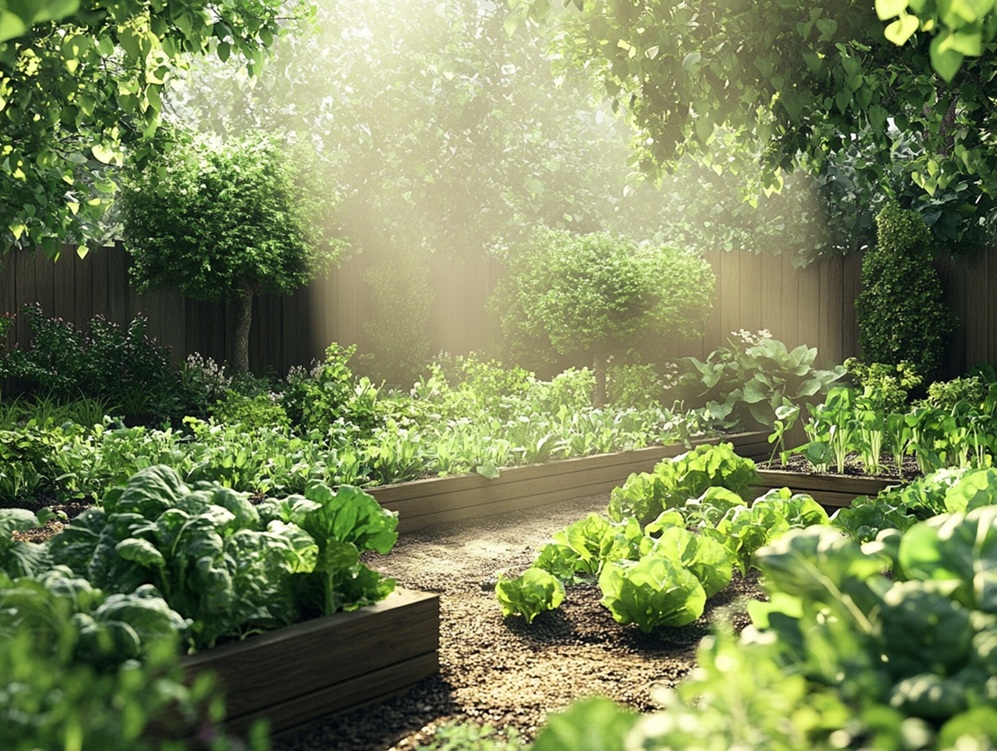Maximizing Shade Gardening for Low-Light Conditions
Gardening enthusiasts often believe that a sunny garden is a prerequisite for growing lush vegetables. However, not all outdoor spaces receive full sunlight, and many urban gardens or backyard plots may only get partial sun or be shaded for part of the day. The good news is that there are vegetables that grow in the shade and can thrive with limited sunlight. Understanding which crops are best suited for low-light conditions can help you make the most of your garden space and enjoy a productive harvest.
Understanding Shade Gardening
Shade gardening refers to the practice of cultivating plants that can grow and produce well in areas with less direct sunlight. For many gardeners, mastering the art of growing vegetables in the shade can open up new opportunities to maximize their garden’s productivity, even in challenging conditions.
Types of Shade
Before choosing vegetables for your garden, it’s important to understand the different types of shade:
- Partial Shade: Areas that receive 3-6 hours of sunlight per day, often in the morning or afternoon.
- Dappled Shade: Light that filters through tree branches, providing speckled sunlight throughout the day.
- Full Shade: Spots that get less than 3 hours of direct sunlight per day, typically remaining in shadow most of the day.
Tip: Most vegetables that grow in the shade prefer partial to dappled shade, as full shade can be more challenging for growth.
Best Vegetables for Shade Gardening
Certain crops are naturally more adapted to lower light levels. Here are some of the top vegetables that grow in the shade:
Leafy Greens: A Shade Gardening Staple
Leafy greens are some of the most adaptable plants for growing in the shade. They are fast-growing, nutritious, and can produce abundant harvests even in low light.
- Lettuce: Thrives in partial shade, especially in warmer climates where full sun can cause it to bolt.
- Spinach: Prefers cooler temperatures and grows well in shaded areas, providing tender, nutrient-rich leaves.
- Kale: A hardy green that grows well in partial shade, offering a rich source of vitamins and antioxidants.
Planting Tip: For optimal growth, plant leafy greens in well-draining soil rich in organic matter to retain moisture without waterlogging.
Root Vegetables for Low-Light Gardens
Many root vegetables can adapt to shady conditions and still produce healthy yields.
- Beets: These vegetables can tolerate partial shade and produce both edible greens and roots.
- Radishes: Perfect for quick harvests, radishes grow fast and can thrive in dappled or partial shade.
- Carrots: While they prefer more sunlight, carrots can grow in partial shade with slightly smaller roots.
Shade-Tolerant Brassicas
Brassicas are a group of vegetables that includes cabbage, broccoli, and cauliflower. Many members of this family can perform well in partial shade.
- Broccoli: While it produces smaller heads in shaded areas, broccoli still yields well and maintains good flavor.
- Cabbage: Grows well in partial shade and produces firm, dense heads if given enough time and space.
- Brussels Sprouts: These take longer to mature but can grow successfully in dappled light.
Herbs that Tolerate Shade
Herbs can be a wonderful addition to a shaded vegetable garden, adding flavor to dishes and acting as companion plants.
- Mint: Thrives in partial to full shade and spreads rapidly. Plant in a container to keep it contained.
- Cilantro: Prefers cooler weather and partial shade, preventing it from bolting too quickly.
- Parsley: Grows well in shaded areas and is a versatile herb for cooking.
Maximizing Shade Gardening for Best Results
Successfully growing vegetables in low-light conditions involves more than just choosing the right plants. Here are strategies to help you optimize your shade garden:
Soil Preparation for Shade Gardening
Good soil is the foundation of a successful garden, especially when sunlight is limited. Shaded areas can retain more moisture, so soil preparation is essential.
- Improve Drainage: Use raised beds or incorporate sand and organic matter into your soil to prevent waterlogging.
- Add Organic Matter: Compost or well-rotted manure improves soil structure, promotes healthy root growth, and helps retain moisture without becoming waterlogged.
Efficient Watering Practices
Shaded areas typically require less watering than full-sun gardens. However, ensuring your plants receive the right amount of moisture is still important.
- Check Soil Moisture: Use your finger or a moisture meter to check soil dampness before watering.
- Water Early in the Morning: Watering in the morning allows plants to absorb moisture before the temperature rises, reducing the risk of fungal diseases.
Spacing and Air Circulation
In shaded gardens, plants can become prone to fungal diseases due to limited airflow.
- Space Plants Generously: Allow sufficient space between plants to promote good air circulation and reduce the likelihood of mildew or rot.
- Prune Regularly: Trim back foliage to maintain airflow and remove any dead or decaying leaves promptly.
Companion Planting for Shade Gardens
Companion planting can enhance the productivity of your shade garden by pairing plants that support each other’s growth.
Best Companion Plants for Shade Gardening
Pairing certain plants together can maximize growth and deter pests:
- Lettuce and Carrots: Planting lettuce next to carrots can provide natural shade for the carrot tops, helping keep the soil cool.
- Kale and Beets: These two vegetables have similar water and nutrient needs, making them good neighbors in a shaded space.
- Herbs and Leafy Greens: Planting herbs like parsley near leafy greens can create a microclimate that retains moisture and encourages healthy growth.
For more tips on effective companion planting, see our article “Unveiling the Power of Companion Planting”.
Common Mistakes to Avoid When Growing Vegetables in Shade
Even with the right knowledge, mistakes can happen. Here are some common pitfalls and how to avoid them:
Overwatering Shaded Plants
Shaded areas often retain moisture longer, which can lead to root rot if overwatered.
- Solution: Always check soil moisture before watering and water sparingly to avoid soggy roots.
Choosing the Wrong Plants
Not all vegetables are suitable for shade gardening. Trying to grow sun-loving crops in low-light conditions can result in poor yields.
- Solution: Stick to vegetables known for their shade tolerance, such as leafy greens, root crops, and shade-friendly brassicas.
Ignoring Soil Fertility
Shaded gardens may require more attention to soil fertility, as fallen leaves and plant debris can build up and change soil composition over time.
- Solution: Regularly add compost or balanced organic fertilizer to keep soil nutrients at optimal levels.
Additional Tips for Thriving Shade Gardens
Creating a successful shade vegetable garden involves more than just the basics. Consider these additional tips:
Use Reflective Surfaces
Maximize available light by using reflective surfaces like white walls, light-colored stones, or reflective garden materials to bounce light into shaded areas.
Rotate Your Crops
Even shade-tolerant plants can deplete the soil of certain nutrients. Practice crop rotation each year to keep the soil healthy and reduce the risk of disease buildup.
Mulch to Retain Moisture
A layer of organic mulch can help maintain consistent moisture levels and prevent soil from becoming compacted.


Leave a Reply